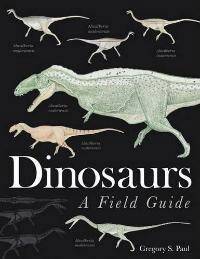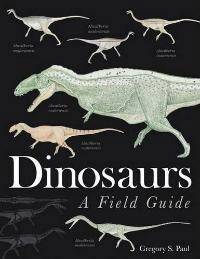
- Afhalen na 1 uur in een winkel met voorraad
- Gratis thuislevering in België vanaf € 30
- Ruim aanbod met 7 miljoen producten
- Afhalen na 1 uur in een winkel met voorraad
- Gratis thuislevering in België vanaf € 30
- Ruim aanbod met 7 miljoen producten
Zoeken
Omschrijving
This is a large format field guide (a playful notion) to the true dinosaurs - the Tetrapoda (no pterosaurs or marine reptiles). Dinosaur taxonomy is complex and contentious, and while more than 1500 species have been claimed, many records are based on partial remains or are without adequate scientific documentation. The author recognises 600+ species. An extensive introduction treats a wide range of topics from taxonomy, evolution, biology and behaviour to a discussion of fossil discoveries and paleontological research. The bulk of the book is devoted to full treatment of the five dinosaur groups: protodinosaurs; predatory dinosaurs and protobirds; prosauropods; sauropods; and ornithiscians.
After each family introduction, the species text includes biometrics, fossil remains (proportion of full animal recovered and sites at which specimens have been found), age, distribution and formations, habitat (where known), and habits (mainly based on anatomical features). The level of knowledge about species varies considerably and this is fully reflected in the species accounts. Many of the species descriptions are accompanied by black-and-white anatomical reconstructions and/or skull diagrams as well as numerous colour renderings of the complete animal. There are also supplementary illustrations - eggs, trackways, herds, juveniles and so forth - and evocative colour and black-and-white 'scenes' of dinosaur behaviour.
After each family introduction, the species text includes biometrics, fossil remains (proportion of full animal recovered and sites at which specimens have been found), age, distribution and formations, habitat (where known), and habits (mainly based on anatomical features). The level of knowledge about species varies considerably and this is fully reflected in the species accounts. Many of the species descriptions are accompanied by black-and-white anatomical reconstructions and/or skull diagrams as well as numerous colour renderings of the complete animal. There are also supplementary illustrations - eggs, trackways, herds, juveniles and so forth - and evocative colour and black-and-white 'scenes' of dinosaur behaviour.
Specificaties
Betrokkenen
- Auteur(s):
- Uitgeverij:
Inhoud
- Aantal bladzijden:
- 304
- Taal:
- Engels
Eigenschappen
- Productcode (EAN):
- 9781408130742
- Verschijningsdatum:
- 25/10/2010
- Uitvoering:
- Hardcover
- Afmetingen:
- 216 mm x 280 mm
- Gewicht:
- 1550 g

Alleen bij Standaard Boekhandel
+ 95 punten op je klantenkaart van Standaard Boekhandel
Beoordelingen
We publiceren alleen reviews die voldoen aan de voorwaarden voor reviews. Bekijk onze voorwaarden voor reviews.











